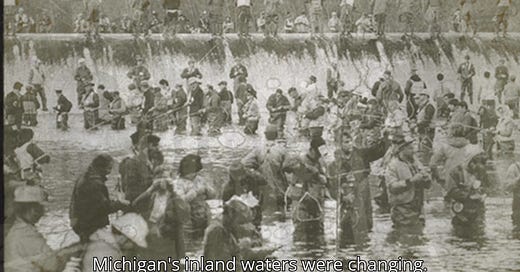A Network Built on Conservation and Angling
By the late 19th century, Michigan's waters were struggling. Native fish species like brook trout and lake whitefish had declined sharply. In response, the state launched one of the country’s earliest hatchery systems, starting in 1873. From that point through the mid-20th century, fish hatcheries became critical infrastructure for supporting the state’s inland and Great Lakes fisheries.
Statewide Growth and Strategic Placement
Early hatcheries were strategically built near clean, cold streams. Locations like Harrietta (est. 1901), Oden (1921), and Thompson (1925) were chosen for their spring-fed water sources. The facilities ranged from modest wood buildings to WPA-era stone structures. Many were open to the public and served as both production sites and civic symbols.
Fish Species and Their Role
The Michigan Department of Conservation prioritized trout—brook, brown, and rainbow—for inland stocking. As demand grew, hatcheries also began raising perch, bass, and walleye for warmwater lakes. The hatcheries helped stabilize fish populations for both recreational anglers and local economies that depended on tourism.
New Deal Expansion and the Role of Labor
The 1930s brought federal investment. The Works Progress Administration (WPA) upgraded or rebuilt hatcheries like Manistique and Grayling. Crews added raceways, concrete water controls, and modern rearing ponds. These expansions made Michigan fish hatcheries among the most productive in the Midwest.
Legacy and Decline
By 1950, Michigan had 9 major hatcheries and 10 satellite stations. These sites had stocked hundreds of millions of fish into public waters. Though some facilities were decommissioned in later decades, others like Harrietta and Wolf Lake continue to operate. Their legacy lives on in every fishing story told along a Michigan river or lake.
Michigan Fish Hatcheries were more than state buildings—they were part of a deliberate strategy to conserve natural resources, support rural jobs, and keep traditions alive. They remain a chapter worth revisiting.









Share this post